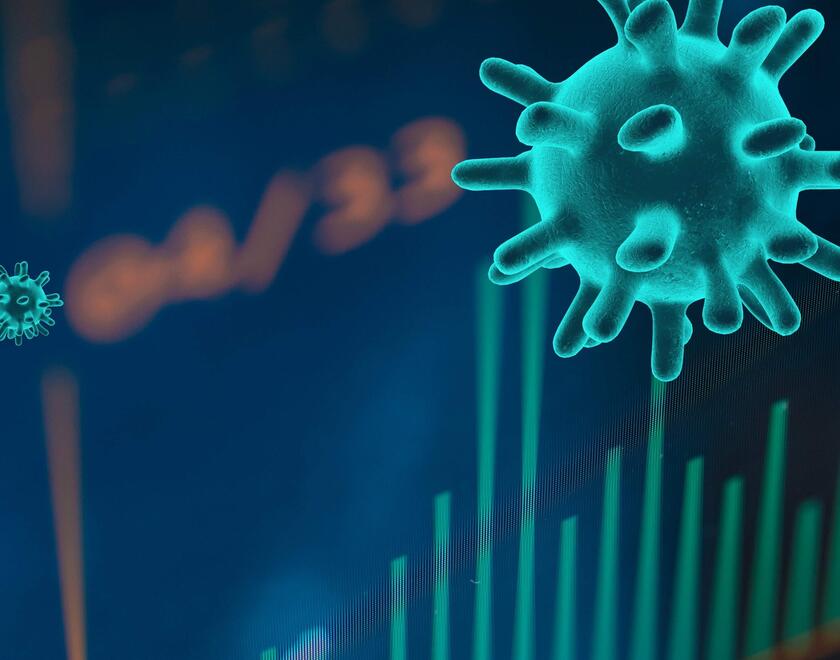Shining an in-depth light on the demography of Jews in Austria today
Dr Daniel Staetsky Prof Sergio DellaPergola
What's in the report:
Written by the Director of the JPR European Jewish Demography Unit, Dr Daniel Staetsky, and the world’s leading Jewish demographer, Professor Sergio DellaPergola, this report shines a light on the demography of Jewish in Austria today, and presents in-depth analysis of fertility rates, age distribution data, patterns of Jewish identity, migration and intermarriage rates to predict Austrian Jewry’s future. It demonstrates, through careful and methodical analysis, that the population is projected to grow.
Whilst the Austrian Jewish population is small, its projected growth constitutes an important finding in European Jewish demography. The Jewish population of Europe has declined dramatically over the past century and a half, particularly as a result of mass migration and the Holocaust. Yet today, in several European countries, demographers are beginning to see signs of growth, driven particularly by high birth rates in the strictly Orthodox population. This study provides an important example of this phenomenon.
The report is a publication of JPR’s European Jewish Demography Unit, an initiative established in 2019 to produce new data to support Jewish community planning across Europe. Funded by the Rothschild Foundation Hanadiv Europe, the Unit is working to produce country-specific reports annually, and this study about Austria is the first of these.
The report draws on three major sources of data: the 2001 Austrian Census, comprehensive records of the Austrian Jewish community and a survey carried out by a JPR/Ipsos consortium in 2018 for the European Union Agency for Fundamental Rights (FRA).
Key findings include:
- Today the core Jewish population of Austria is estimated to be just above 10,000. The ‘core Jewish population’ consists of people who would explicitly identify themselves as Jews. This is the highest number of Jews observed in Austria since the 1960.
- According to the Israeli Law of Return – which uses a broader definition to determine who is entitled to migrate to Israel and immediately apply for Israeli citizenship – the eligible Jewish population in Austria is currently about 20,000.
- The core Jewish population constitutes 0.1% of the total population of Austria. 64% of all Austrians are Roman Catholics, 17% are unaffiliated in religious terms, and 8% are Muslims.
- The Jewish population of Austria is growing and may reach 11,000-12,000 by the mid-2030s.
- About 86% of all Austrian Jews reside in Vienna. Only 19% of all Austrians live in Vienna
- The average number of children that a Jewish woman in Austria is expected to have in her lifetime is 2.5; strictly Orthodox Jewish women have 6–7 children per woman, on average, while non-strictly Orthodox Jewish women typically have about 2. The average among Austrian women in general is 1.5.
- Migration has been a powerful factor of growth in the Austrian Jewish population. Jews born in Israel constitute about 20% of Jews in Austria today.
- About 78% of Jewish households in Austria are affiliated with the Jewish community through membership of its representative organisation. Compared to other communities around the world, this is a very high level of affiliation.
- About 30% of Jews in Austria identify as ‘Orthodox’ or ‘Traditional’ and 19% as ‘strictly Orthodox.’ 15% identify as ‘Reform/Progressive’ and 19% as ‘just Jewish.’ Austrian Jewry has one of the highest proportions of strictly Orthodox Jews of all European Jewish communities.
- Due to their high fertility, the strictly Orthodox represent the main engine of population growth for the Jewish community as a whole. For the same reason, their share in the Jewish population is expected to increase significantly in the medium term.
- About two thirds (70%) of partnered Austrian Jews have a Jewish partner.
- About 70% of all Jewish children of compulsory school age in Austria attend Jewish schools. While 100% of strictly Orthodox Jews attend Jewish schools, among the non-strictly Orthodox uptake is still significant – about 52%.
The German language version of this report can be found here.
Our reports are free to download
However, they are not free to produce, and as a registered charity, JPR relies on the generosity of donors to undertake its work. Please consider making a donation to help cover the costs of this particular report or to support JPR’s work more generally.
Donate hereDr Daniel Staetsky
Senior Research Fellow and Director of JPR's European Demography Unit
Dr Daniel Staetsky
Senior Research Fellow and Director of JPR's European Demography Unit
Daniel holds a PhD in Social Statistics and Demography from the University of Southampton and a Master’s degree in Population Studies from the Hebrew University...
Read moreProf Sergio DellaPergola
Chairman of JPR's European Demography Unit
Prof Sergio DellaPergola
Chairman of JPR's European Demography Unit
Professor Emeritus and former Chairman of the Hebrew University’s Avraham Harman Institute of Contemporary Jewry, and Chairman of JPR’s European Jewish Demography Unit, Prof DellaPergola...
Read more



